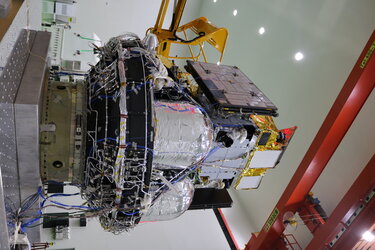
Highlights from the test campaign of the Smile payload module in Europe
This video shows the payload module for the Solar wind Magnetosphere Ionosphere Link Explorer (Smile) undergoing a series of different environmental tests at both Airbus Madrid, Spain, and the European Space Research and Technology Centre (ESTEC) in Noordwijk, the Netherlands.
These milestones include integration of the Soft X-ray Imager and ultraviolet instruments on the payload module (October 2021, Airbus Madrid); preparing and completing thermal testing of the payload module (11–24 Jan 2022, ESA/ESTEC); deploying the 3 m-long magnetometer boom under helium-filled balloons to simulate the weightlessness of space (27 Jan 2022, ESA/ESTEC); vibration testing (Feb 2022, Airbus Madrid); and finally preparing the payload module for transport to China (17 Mar, 2022).
The payload module has now arrived in Shanghai, China. It will now be integrated on the Smile platform, beginning in April-May 2022. Once the satellite is complete, it will be subjected to a comprehensive five-month-long qualification test campaign including thermal, mechanical and electromagnetic compatibility testing, and magnetic, deployment and functional tests at system level.
Smile is a joint mission between ESA and the Chinese Academy of Sciences (CAS), and will aim to build a more complete understanding of the Sun-Earth connection by measuring the solar wind and its dynamic interaction with the magnetosphere.






